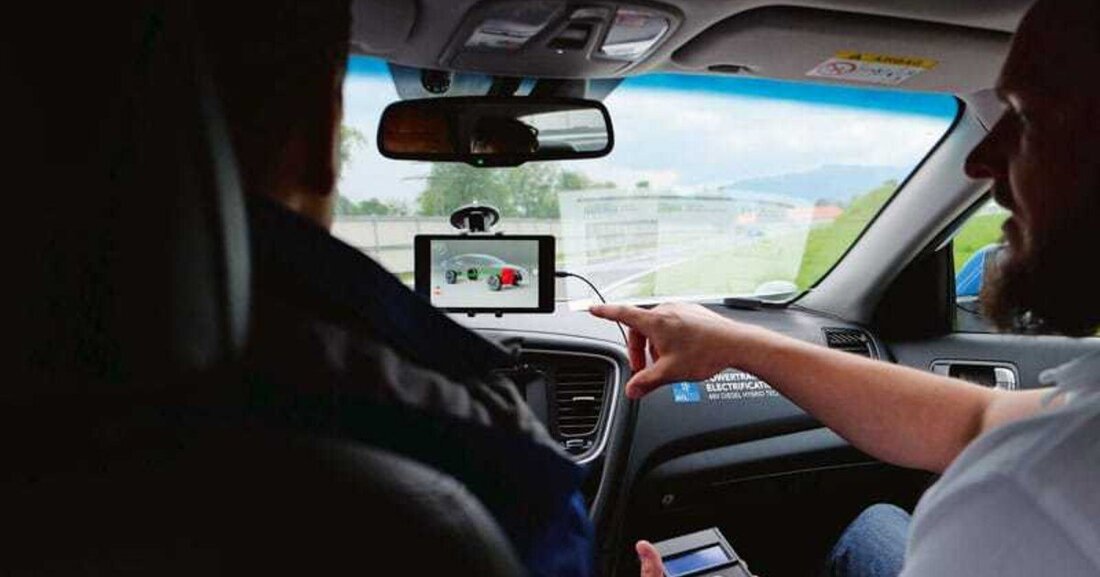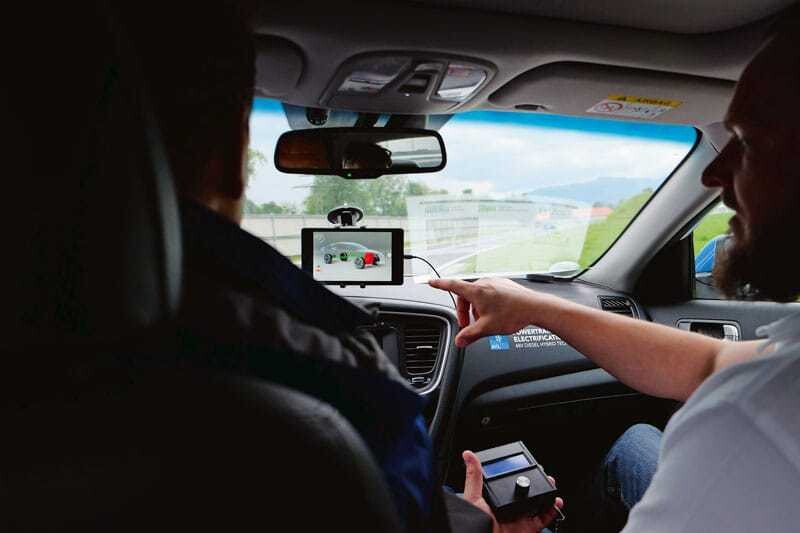The Styrian diesel rescuers
On its test track in Gratkorn, AVL List GmbH demonstrated a wide range of drive solutions that will also meet future strict emissions regulations. Car manufacturers from all over the world sent their engineers to the test drives.

The Styrian diesel rescuers

A thunderstorm turns the AVL test oval in Gratkorn into a slide within seconds. The Alfa Romeo 4C, which was just roaring loudly, sneaks into the pit lane, where the guests of the AVL Test Drive have already taken shelter. Numerous managers and engineers from automobile manufacturers and suppliers from China, Japan, Korea and Europe came to Styria to browse the supermarket of the most innovative drive solutions and select the solutions suitable for their sales markets from the AVL shelf. In front of them is a column of 25 demonstrator vehicles, including the Alfa 4c Hyper 200 tuned to a maximum output of 510 hp, but also some conventional sedans that boast spectacular internal values. After the AVL engineers gave it a belt-driven 48-volt electric motor and an electric additional compressor, a Kia Optima with a diesel engine impressed on the test track with significantly improved performance and 15 percent lower diesel consumption than the production model. Michael Weißbäck, head of drive systems for diesel cars at AVL, explains the details of his engineers' intervention: "The drive train is based on a 1.7 liter turbo diesel engine with a larger mono turbocharger. The electric charger is positioned in front of the exhaust gas turbocharger, and the gears in the transmission have been lengthened by 14 percent." Conclusion: Despite the transmission downspeeding, the 48-volt diesel hybrid accelerates from 0 to 100 km/h 10 percent faster than the basic model, with the electric charger ensuring a linear increase in speed without any “turbo lag”. Weißbäck is convinced: “An innovative drive solution only has a chance on the market if it simultaneously offers lower fuel consumption and more driving pleasure.”
Diesel with a future
When asked whether the diesel drive could become a phase-out model due to stricter emissions limits, the experienced engine developer replied: "The diesel has 15 percent lower CO2 emissions compared to the gasoline engine and therefore makes sense for heavier vehicles in the future. We are getting nitrogen oxide emissions under control with new exhaust gas aftertreatment systems." Using a 3 Series BMW demonstrator, Weißbäck, together with AVL managing director Robert Fischer, will demonstrate the exhaust gas aftertreatment concept developed in-house, with which even the strict Californian Sulev limits (super low emissions) can be achieved. The exhaust gases are cleaned using an electrically heated catalytic converter, NOx storage catalytic converter and a urea injection system that is closely coupled to the particulate filter before they leave the tailpipe. “This means that we are well below not only the European limits, but also the much stricter American and Chinese limits,” says Robert Fischer. For Michael Weißbäck, the lower limit up to which a diesel engine makes sense is the Golf class. The AVL engineers have also developed a solution for these that can also pass the stricter emissions tests that will be carried out from 2017. “We equipped a Renault Megane with a conventional 1.5-liter diesel engine with an additional 12-volt compressor and were able to reduce CO2 emissions to 75 grams per kilometer,” explains Weißbäck. For automobile manufacturers, who will have to demonstrate an average fleet consumption of a maximum of 95 grams of CO2/km from 2020/21, this is a very attractive contribution to achieving their emissions targets. “The advantage of this solution is that it also increases driving pleasure through improved engine response, and that it can also be implemented very cost-effectively,” explains Weißbäck. The Styrian engine developer does not dare to predict with certainty which of the survival strategies for diesel engines developed in Graz will actually find their way onto the road. “It’s like looking into a crystal ball,” says Weißbäck, “at the moment a lot is in limbo.”
China is becoming the benchmark
The motto of the AVL conference the next day in the Helmut List Hall in Graz is “The Powertrain for the Chinese Market”. In his welcoming speech, AVL Chairman Helmut List acknowledged that China is currently the most important driver of automobile development. “China is the last country of unlimited opportunity for car manufacturers,” says List, “because people there still really care about owning their own car.” However, the China VI emissions standards that will apply from December 2017, some of which are 70 percent below the Euro 6 limits, pose major challenges for all manufacturers. List therefore recommends: "If you want to survive in the Chinese market with the world's strictest emissions regulations, you should invest in highly efficient gasoline engines, extensive electrification and mild hybrids that are affordable for a wide range of customers."

 Suche
Suche
 Mein Konto
Mein Konto